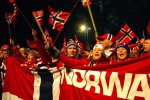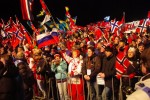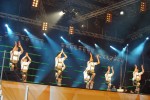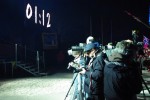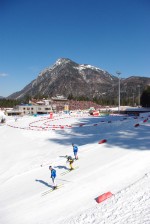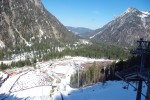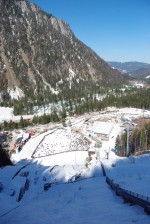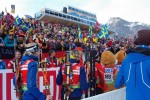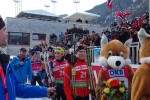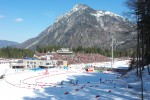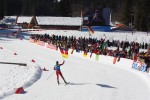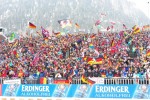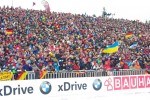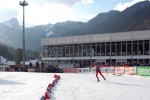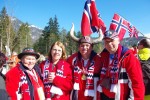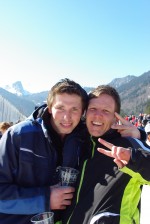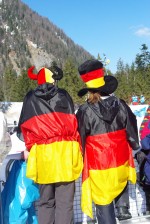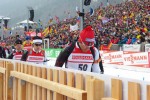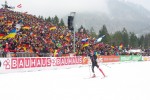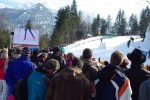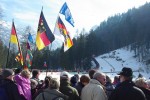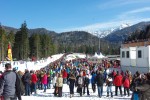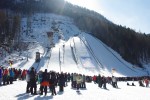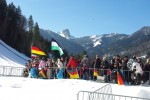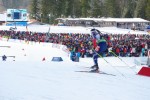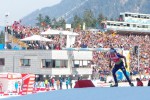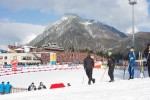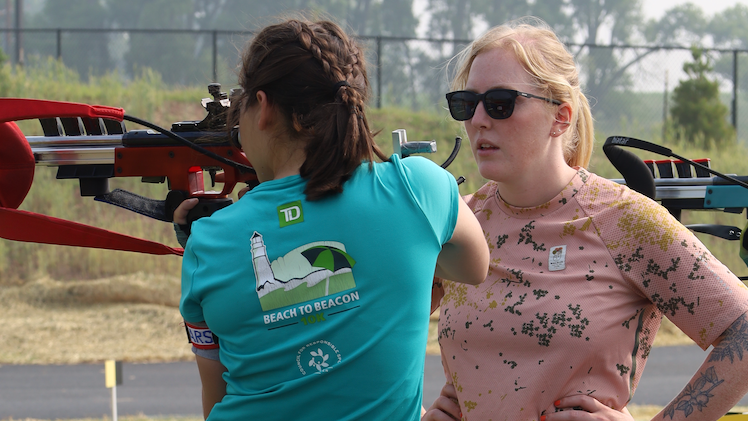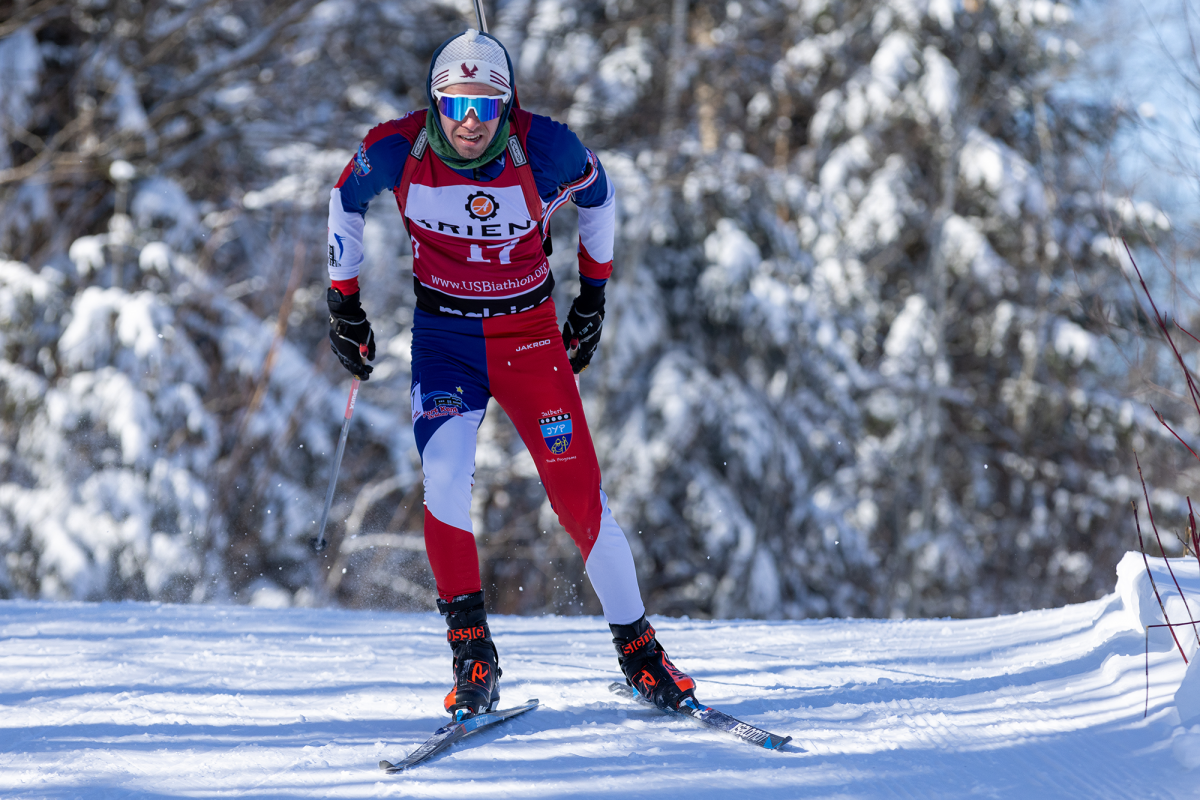
RUHPOLDING, Germany – While biathlon doesn’t draw huge crowds in the U.S., Germany is another story.
As in Norway and Russia, biathlon is the most successful winter sport; over the course of the 10 weekends of World Cup and Championship racing in this season, 450,000 spectators will have attended competitions.
And nowhere are they more vocal than in Germany, home of Oberhof and Ruhpolding, the two most popular venues on the circuit (during Germany’s partition, Ruhpolding was one of the centers for biathlon for West Germany and Oberhof for East Germany). These venues draw more fans than any others; athletes frequently describe the atmosphere as crazy. 2012 is Ruhpolding’s fourth year hosting World Championships, as it was also the site of the 1979, 1985, and 1996 events. Oberhof hosted the 2004 Championships.
Situated in a narrow valley, Ruhpolding’s Chiemgau Arena caps attendance at approximately 30,000 fans; that number has been in attendance every day of the championships, and many events were sold out weeks before the races even started. A total of 200,000 visitors were expected for the Championships, while the town itself has just 6,000 residents. In Germany, biathlon broadcasts took up 30% of the market when they were aired, and reportedly drew as many as seven million viewers per race.
“There is not one stadium in the world where the athletes are feeling the spectators so close on the back as here in Ruhpolding,” IBU President Anders Besseberg said of the venue.
The party atmosphere at these events is comparable to few winter sports in North America. Fans arrive hours before the races to secure a coveted spot along the fence and get as close to the action as they can. Thousands of liters of beer and mulled, fortified glühwein have been sold over the course of the ten-day event, as well as thousands of rolls, pretzels, sausages, and cakes. Spectators bring flasks and dress in their country’s colors, often sporting elaborately patriotic costumes.
While there is a huge contingent of Norwegians attending the races, the Germans expect the most from their athletes, creating incredible pressure for the racers but also incredible support. German athletes are cheered when as they warm up, zero their rifles, and walk to the start. Live TV coverage follows star Magdalena Neuner as she changes her gloves and eats a granola bar before she races. There are press conferences with German coaches almost every day, and when the athletes finish a race, it can take hours for them to leave the venue after being assailed by journalists.
During the races, the stadium erupts in a loud roar every time a German athlete out on the course is shown on the big screen by one of the 38 cameras placed around the two- to four-kilometer loops. When one of them enters the stadium to shoot, the crowd initially surges – but then falls deadly silent as their racer sets up and focuses on the targets. With every hit, the fans explode into a unified “HEI!” With a miss, they groan.
FasterSkier caught audio of the atmosphere when German double Olympic gold medalist Michael Greis came in to shoot during the men’s 10 k sprint competition. Listen for the overall support from the crowd as he skis into the range; then, moderate cheers as another athlete hits their targets. At the 44-second mark, Greis begins actually shooting. Follow as he hits four targets and misses one.
FasterSkier has also compiled a photo gallery of the stadium and fans from the last ten days and hope to show readers something they can all hope to experience at one time or another: a place where nordic sports have enthusiastic and unwavering support.

